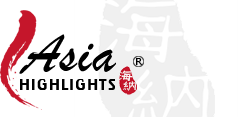Singapore is hot in July, with showers. If you are planning to visit Singapore in July, we suggest going to Bukit Timah Nature Reserve, Changi Chapel and Museum, Little India, and Maxwell Hawker Center. Read on to find out more about travel and weather, including temperatures, rainfall, humidity, and tips for July.
Singapore Weather in July: Overview
Averages:
- Temperature range: 25–31°C (77–88°F)
- Daily high feels like: 43°C (109°F)
- Rainfall: 15 cm (6 inches)
- Rainy days: 14
- Sunshine hours/day: 6
- Humidity: around 81% (very humid)
Singapore's weather is hot all year as a result of its proximity to the equator. July is no different, when temperatures peak at around 31°C (88°F) during the day, which feels like 43°C (109°F) as a result of high humidity at around 81%.
There are approximately 6 hours of sunshine per day in July, and around 14 rainy days. Showers can occur, but they are generally heavy and over quickly, with July seeing around 15 cm or 6 inches of rain. July does not fall in the monsoon season in Singapore.
The Best Places to Visit in Singapore in July
July is a popular time to visit Singapore, with particularly families visiting the country during their school holidays. As Singapore is a tropical island, the weather is the same most of the year, except for variations in rainfall. July does fall outside of the rainy season and is thus a good time of the year to go.
1. See Wild Monkeys at Bukit Timah Nature Reserve
Bukit Timah Nature Reserve is Singapore's highest natural point, and is also a beautifully rich and diverse rainforest nature reserve. It's a great walk to do for any fitness level, although it is an uphill walk. We recommend taking it easy due to the heat, and bringing plenty of water and a hat or umbrella to protect against the sun (or rain), although you're mostly in covered rainforest.
The main route will take you around 45 minutes to get up, and approximately 30 minutes to get back down.
The nature reserve is also home to wild long-tailed macaque monkeys. They tend to hang around and know that visitors often have food on them, so don't show them any snacks. It is forbidden to feed them, and also recommend not to interact with them.
Other animals you might spot include birds, certain bugs and insects, reptiles, and snakes if you are lucky (they're harder to spot!).
Bukit Timah Nature Reserve is also home to (what is believed to be) Singapore's tallest tree — a rainforest tree Seraya, which is around 150 years old. The Malay name for this tree it Temak, and it's sometimes said that the "Timah" in Bukit Timah was actually a European mispronunciation of the word "Temak."
2. Learn about Singapore under Japanese Occupation at the Changi Chapel and Museum
Singapore's Changi Chapel and Museum provide context and background to the time of Japanese occupation in Singapore. At this location, civilians and soldiers were held captive during the occupation, and the exhibits are centered around remembrance and reflection.
Artifacts on display include diaries and tags from prisoners of war, prison doors, military uniforms, medals, Malaysian language books, and more. You'll be able to learn more about their stories, making the museum a highly recommended stop for history buffs, particularly those with an interest in military history. The content of the museum is harrowing, but important to learn about nonetheless.
Other sights you might like if you're interested in military history include Fort Canning Hill (you can read more about this in visiting Singapore in May), and we also think the National Museum of Singapore provides great historical context to the Lion City. You can read more about this museum in our article about visiting Singapore in February.
3. Explore Little India on Foot and Try Local Food
Singapore is a uniquely diverse nation, and there is a large Singaporean population that has Indian heritage and backgrounds. Little India is one of the most colorful neighborhoods in Singapore, with many of the Indian shops, restaurants, and Hindu temples found in this area.
We suggest stopping off at the beautiful Hindu Sri Veeramakaliamman Temple. This is one of the oldest Hindu temples in the country, and has gorgeous roof decorations. It is open to visitors, but don't forget to take your shoes off before you go inside.
From there, it is fun to just wander around. Little India is home to incredible shops and restaurants, such as the Tekka Center, which is both a shopping mall and a foot court all in one. You can read more about this in our article about visiting Singapore in April.
We also recommend checking out Mustafa Center, another department store with Indian roots that has been around in Singapore for decades. It has some food stalls downstairs, including some specializing in vegetarian Indian cuisine, which are a great place to try Indian food. Inside, Mustafa Center is known for gold, which can be bought there at great prices, as well as beautiful Indian clothing, fabrics, and essentially everything you can think of. The store is huge, and is open 24 hours a day.
4. Enjoy Singaporean Cuisine at Maxwell Hawker Center
 Singaporean Cuisine
Singaporean CuisineYou haven't been to Singapore if you haven't sampled the local food, of which there is a huge variety. Due to Singapore's diverse make-up, you will be able to find Indian, Malay, Indonesian, and Chinese food influences in Singapore's many hawker centers. They stay open late, and are also a popular place for young people to get together and have a few drinks.
Maxwell Hawker Center is one of the most popular ones with great choice. Grab a table, and split up to check out the different stalls. Each stall specializes in one or a few dishes, meaning you know your food will be made by an expert. Some of the stalls even hold Michelin Stars or have been mentioned in the Michelin Guide.
We recommend trying a famous Singaporean curry puff, a delicious flakey pastry filled with curried potatoes, onions, peas and corn, or succulent roasted meats, or satay skewers.
Other hawker centers that are famous in Singapore, depending on where on the island you are staying, are Newton Food Center, Amoy Street Food Center, Adam Road Food Center, and East Coast Lagoon Food Village. While each center has different stalls, you will usually find the most famous Singaporean dishes at each of these.
High Season: More Expensive and More Crowded
July falls in Singapore's peak travel season, with more tourists around. This means that accommodation and transportation can be a little more expensive, and you can also expect there to be more crowds at the tourist sites.
What to Wear in July
Singapore is hot due to its proximity to the equator, with humid, hot weather and occasional showers. As a result, we recommend bringing your summer wardrobe, with shorts, linen trousers, dresses, linen or cotton shirts, as well as sandals or jandals.
We also suggest bringing a hat, sunglasses, sunscreen, as well as an umbrella for the occasional shower or as a protection against the sun.
Recommended Tours for Singapore in July
Our experts have put together a range of itineraries for those who are interested in visiting Singapore. Here are two we particularly recommend for July:
If you have any questions or would like for us to tailor-make your trip to Singapore, let us know what you'd like to do and see, and our team can put together your ideal Singapore trip. Contact us to arrange your trip to Singapore.
Get Inspired with Some Popular Itineraries
At Asia Highlights, we create your kind of journey — your dates, your destinations, at your pace. You can have any trip tailor made for your travel.



